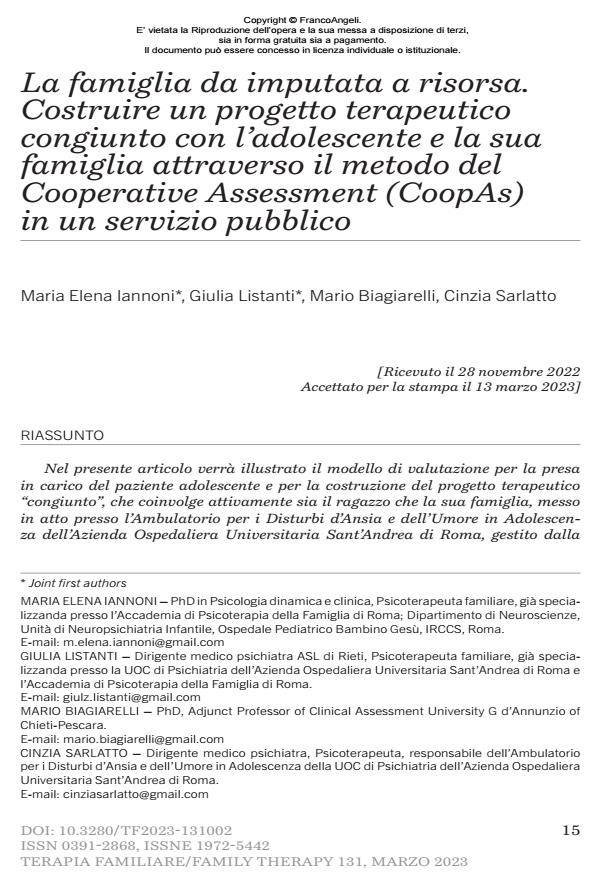The family from defendant to therapeutic resource. How to build a joint therapeutic project with the adolescent and his family through the Coope- rative Assessment method (CoopAs) in a public health clinic
Journal title TERAPIA FAMILIARE
Author/s Maria Elena Iannoni, Giulia Listanti, Mario Biagiarelli, Cinzia Sarlatto
Publishing Year 2023 Issue 2023/131
Language Italian Pages 14 P. 15-28 File size 753 KB
DOI 10.3280/TF2023-131002
DOI is like a bar code for intellectual property: to have more infomation
click here
Below, you can see the article first page
If you want to buy this article in PDF format, you can do it, following the instructions to buy download credits

FrancoAngeli is member of Publishers International Linking Association, Inc (PILA), a not-for-profit association which run the CrossRef service enabling links to and from online scholarly content.
This article will illustrate the evaluation model for taking charge of the ado- lescent patient and for the construction of the ‘joint’ therapeutic project, which actively involves both the teenager and his/her family, implemented at the Am- bulatory for Anxiety and Mood Disorders in Adolescence of the Sant’Andrea University Hospital in Rome, managed by Dr. Cinzia Sarlatto and her team of psychiatrists, clinical psychologists and psychotherapists in training.
Keywords: adolescence, anxiety, depression, psychodiagnostic assessment, family
Maria Elena Iannoni, Giulia Listanti, Mario Biagiarelli, Cinzia Sarlatto, La famiglia da imputata a risorsa. Costruire un progetto terapeutico congiunto con l’adolescente e la sua famiglia attraverso il metodo del Cooperative Assessment (CoopAs) in un servizio pubblico in "TERAPIA FAMILIARE" 131/2023, pp 15-28, DOI: 10.3280/TF2023-131002